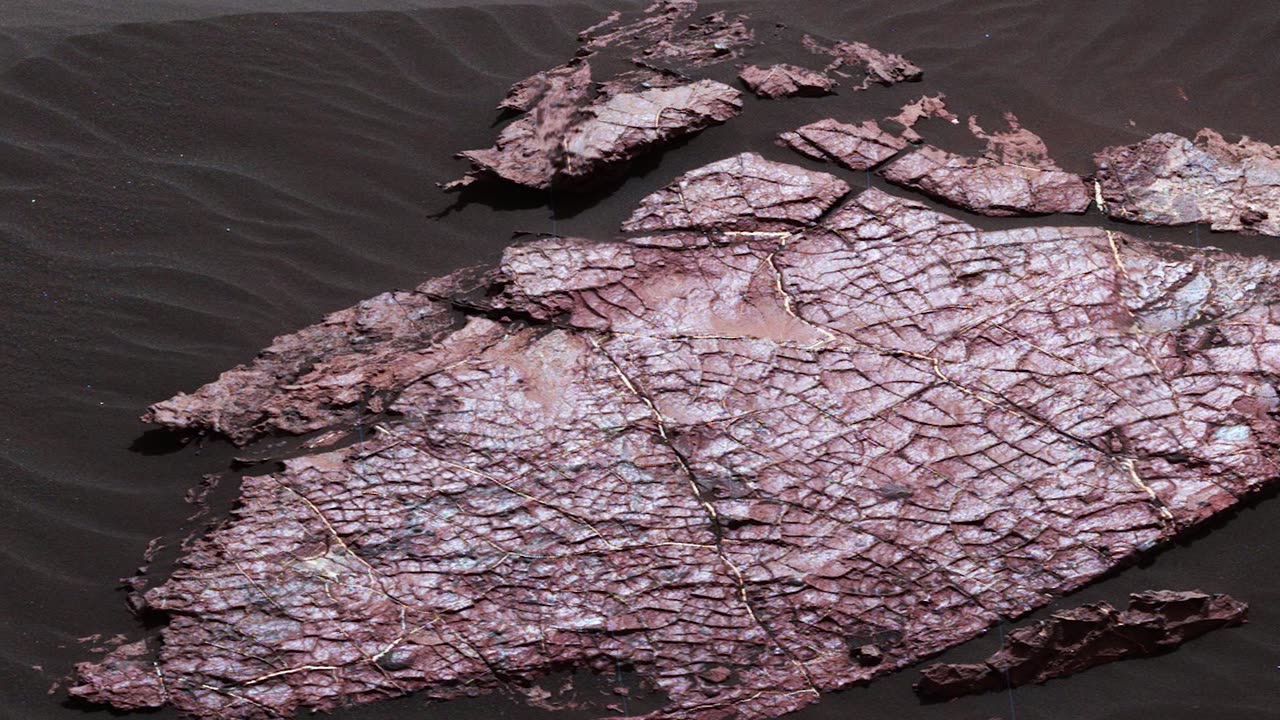Premium Only Content

Mars : A Guide to Gale Crater
August 02, 2017
The Curiosity rover has taught us a lot about the history of Mars and its potential to support life. Take a tour of its landing site, Gale Crater.
TRANSCRIPT
In 2012, NASA’s Curiosity Rover went to Mars to explore Gale Crater, a large impact basin with a massive, layered mountain in the middle. How did this strange landscape come to be? And what can its history teach us about the potential for life on Mars? After several years of exploration, here’s what we think could have happened.
Around 3.7 billion years ago, a large meteor impact blasts out the initial crater, cracking the rock below and leaving a central peak as the surface rebounds. It’s a wetter time in Mars’ history. Groundwater seeps into the new crater, while rivers fed by rain or melting snow also flow in, forming a large lake – and carrying in gravel, sand and silt.
This material keeps building up over millions of years. And as each layer cements into rock, it records a snapshot of the environment that shaped it. In time, the gradual drying of Mars shuts off the rivers. But sediment keeps piling up as sand and dust blow into the crater, deeply burying the deposits laid down in water.
Meanwhile, groundwater remains deep below the dusty surface. At some point, winds that once carried sediment in begin scouring it back out. In areas closer to the crater rim, these winds dig all the way down into the ancient lake deposits. And as the heavy weight above is lifted, these layers crack, which helps groundwater flow through and alter them again before they dry out.
By about 3 billion years ago, we’re left with the basic form we see today. It’s in this version of Gale Crater that Curiosity has helped piece together the story: Sediment patterns show a lot of water was present, continually, over many millions of years – both as persistent groundwater, and a long-standing lake (with occasional dry spells).
Mineral and chemical readings show that water from both the lake and subsurface was friendly for potential microbes. Drill samples from the lakebed show key elements, organic molecules, nutrients and energy sources that microbes could have used. Water flowing through underground fractures could have supported life even in deeply buried rocks. And the composition of some layers makes them good for preserving potential signs of past life.
Taken together, the evidence points to Gale Crater (and Mars in general) as a place where life — if it ever arose — might have survived for some time.
With our primary mission fulfilled, we continue exploring: uncovering the history of Mars, and learning more about how and where future missions can search for the signatures that ancient life may have left behind.
-
 UPCOMING
UPCOMING
BlackDiamondGunsandGear
6 hours agoAFTER HOURS ARMORY w/ DLD & John from GOA & FLR
176 -
 LIVE
LIVE
Man in America
7 hours agoTREASON? Obama, Hillary, and Soros in the New World Order Agenda EXPOSED w/ Mel K
6,044 watching -
 LIVE
LIVE
The Connect: With Johnny Mitchell
7 hours agoOne Man's Mission To Stop Human Trafficking: How A Billionaire Mercenary Saved Hundreds Of Children
183 watching -
 LIVE
LIVE
Tundra Tactical
3 hours ago🔫 California Ammo Win, Sig Sauer P320 Controversy, Meme Review & Would You Rather! 🎉🔥
463 watching -
 16:24
16:24
Forrest Galante
54 minutes ago6 Deadliest Man Eaters to Ever Exist
4.41K1 -
 10:14
10:14
MattMorseTV
5 hours ago $3.71 earnedThe EU is in HOT WATER.
58.6K35 -
 LIVE
LIVE
The Rabble Wrangler
23 hours agoPUBG with The Best in the West!
31 watching -
 DVR
DVR
EvilT4000
4 hours agoSaturday.....🟢For energy and focus click my Dubby link!
19 -
 LIVE
LIVE
SlingerGames
39 minutes agoSpartan Night - Halo and More | Creator for @SELFMADEGGS
19 watching -
 LIVE
LIVE
Mally_Mouse
6 hours agoSpicy Saturday!! - 10k CELEBRATION! - Let's Play: Labyrinthine
346 watching